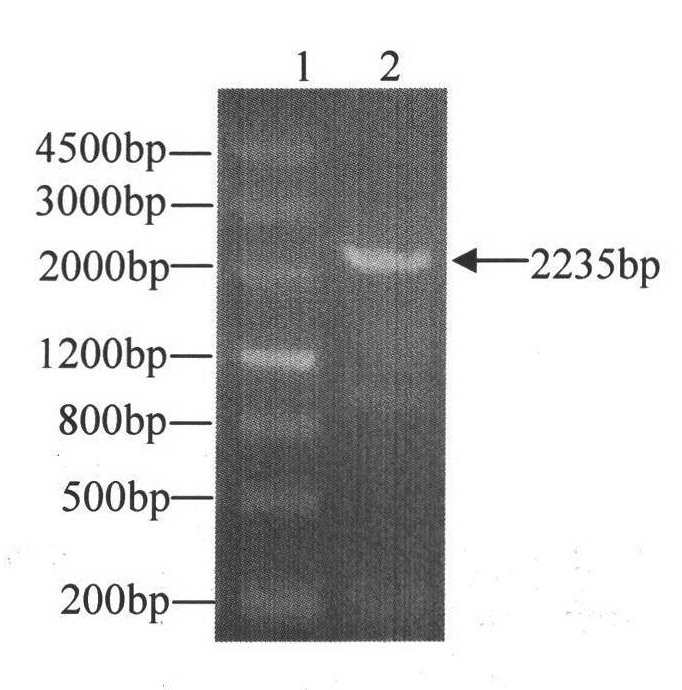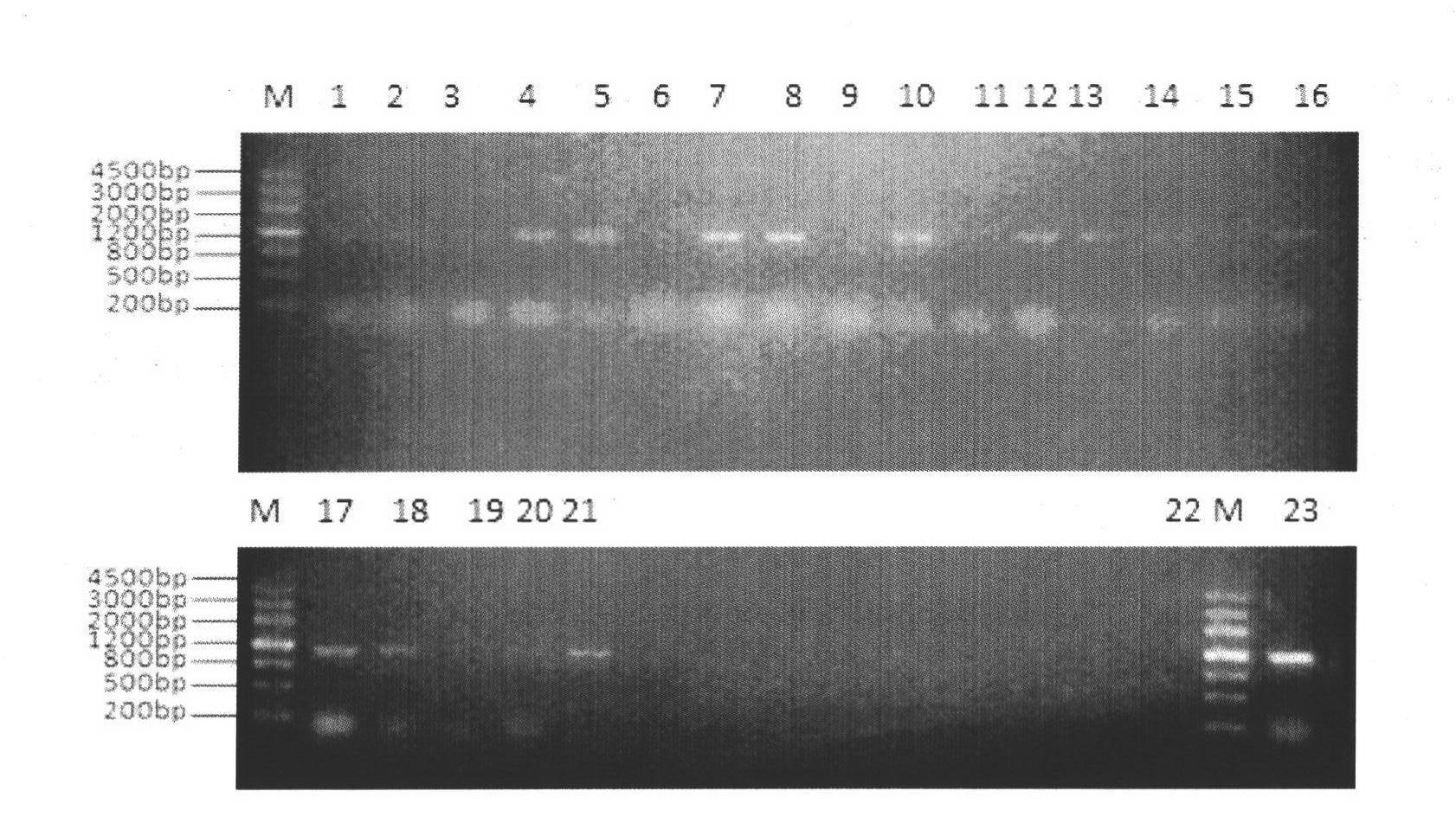Recombinant vector and recombinant bacterium of Trichoderma reesei beta-glucosaccharase gene BGL1, and expression of Trichoderma reesei beta-glucosaccharase gene BGL1 in recombinant bacterium
A technology of glucosidase and Trichoderma reesei, applied in the field of bioengineering, can solve the problems of loss of β-glucosidase activity, low content of β-glucosidase, unreachable, etc., to solve the energy crisis and improve degradation Efficiency and productivity improvement effect
- Summary
- Abstract
- Description
- Claims
- Application Information
AI Technical Summary
Problems solved by technology
Method used
Image
Examples
Embodiment 1
[0035] Cloning of Example 1 Trichoderma reesei (Trichoderma reesei) β-glucosidase gene
[0036] The total RNA of Trichoderma reesei CICC 13052 was extracted with Trizol reagent according to the instructions of the kit.
[0037] Get 2ug of total RNA, reverse-transcribe it into cDNA (Promega Company) with a reverse transcription kit, use this cDNA as a template, and use the nucleotide sequence shown in SEQ ID NO.1 and SEQ ID NO.2 in the sequence listing Carry out PCR for upstream primer and downstream primer, amplify the Trichoderma reesei β-glucosidase gene BGL1 gene of 2235bp shown in SEQ ID NO.3 in the sequence listing (see figure 1 ). Reclaim the PCR product, be connected to TA carrier pGEM-T (Promega company) and obtain new plasmid, confirm through sequencing that this plasmid contains Trichoderma reesei β-glucosidase gene BGL1, and the plasmid is named as pGEM-BGL1, promptly obtains containing Richteri Plasmid pGEM-BGL1 of the BGL1 gene of Trichoderma. build strategy se...
Embodiment 2
[0038] Example 2 Construction of Trichoderma reesei β-glucosidase gene BGL1 to Pichia pastoris expression vector
[0039] Using the plasmid pGEM-BGL1 as a template, using the nucleotide sequence shown in SEQ ID NO.4 in the sequence listing as an upstream primer, and using the nucleotide sequence shown in SEQ ID NO.5 in the sequence listing as a downstream primer for PCR amplification, Obtain the 2198bp fragment shown in SEQ ID NO.6 in the sequence table, connect the 2198bp fragment with the TA vector pGEM-T with T4 ligase, transform the transformant obtained by Escherichia coli TOP10F', and confirm the plasmid in the transformant by sequencing It is formed by connecting Trichoderma reesei β-glucosidase gene BGL1 and pGEM-T, and the new plasmid obtained by transformation is named pTBGL1, and the plasmid pTBGL1 is extracted from the above-mentioned transformants, and then obtained from Pichia pastoris The pPICZalpha C plasmid was extracted from the Escherichia coli expressing th...
Embodiment 3
[0040] Example 3 Trichoderma reesei β-glucosidase gene BGL1 integrated into Pichia pastoris chromosome:
[0041] Take 10 μg (you can also choose 15 μg) of the pPICZalpha C-BGL1 plasmid, use PmeI enzyme to cut into the 5713bp fragment shown in the linear SEQ ID NO.9, after phenol / chloroform extraction, ethanol precipitation linear SEQ ID NO.9 After drying, dissolve the DNA fragment shown in sterile water to make a DNA solution with a DNA concentration of 1 μg / μL (or 0.5 μg / μL);
[0042] Prepare the competent cells of Pichia pastoris host strain X-33 by referring to the electroporation transformation preparation yeast competent cell method in the refined Molecular Biology Experiment Guide (Fourth Edition) (P512-513), and 80 μL Bath Mix the competent cells of Pichia host strain X33 with 10 μL of 1 μg / μL (or 0.5 μg / μL) linear DNA solution, and then transfer to 4°C (or any value between 0-4°C) ) into the pre-cooled electrode cup, ice bath for 5min, voltage 1500V, electric shock wi...
PUM
 Login to View More
Login to View More Abstract
Description
Claims
Application Information
 Login to View More
Login to View More - R&D
- Intellectual Property
- Life Sciences
- Materials
- Tech Scout
- Unparalleled Data Quality
- Higher Quality Content
- 60% Fewer Hallucinations
Browse by: Latest US Patents, China's latest patents, Technical Efficacy Thesaurus, Application Domain, Technology Topic, Popular Technical Reports.
© 2025 PatSnap. All rights reserved.Legal|Privacy policy|Modern Slavery Act Transparency Statement|Sitemap|About US| Contact US: help@patsnap.com



